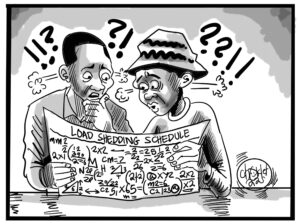In this weeks’ edition of the Monday Opinion, we endeavortoelucidate the International Monetary Fund (IMF) Bailout Package and its background. Zambia has been dating the IMF for a refinancing facility since 2016, when the countrybeganseeking for solutions to the widening debt, fiscal deficit, and poor economic performance.
A bailout package is a plan to give financial support to a country that is at the brink of collapse usually due to high indebtedness. Zambia’s debt to GDP ratio stands at over 117%,implying thatthe country’sannual productive or income capacity is 17% less than its current debt.For developing and emerging economies, the suggested debt-to-GDP ratio is 40%,while that of developed nations is 60% andthese should not be breached on a long-term basis. The debt to GDP threshold for a developed country is deemed detrimental to output if it breaches 77% and around 64% for emerging economies and 60% for developing nations.
The IMF helps nations in crisis by providing financial assistance to provide them breathing room as they execute policies to restore economic stability and prosperity. It provides emergency funding to assist in preventing and mitigating calamities.For instance, to help avert the challenges of the COVID-19 pandemic, IMF member states received Special Drawing Rights (SDRs) allocations, where Zambia was credited withUS$1.3 billion.
The IMF keeps track of economic and financial events to assist in contributing to the global economy through lending, surveillance, and technical aid. It keeps track of how countries are doing and any possible threats, such as trade wars or uncertainties. Providing advice to its members on how to develop their economies, as well as short-term loans and support to struggling countries.
The Debt Service Suspension Initiative (DSSI) entails bilateral official creditors suspending debt service payments to the poorest countries that request it for a specified time. DSSI was adopted in April 2020, and it allowed 73 countries to temporarily suspend “official sector” or government-to-government debt payments. The payments are deferred rather than forgiven, with a five-year payback schedule and a one-year grace period. G20 bilateral official creditors decided on April 7, 2021, to extend the DSSI for another six months, until the end of December 2021.
The DSSI is part of a larger package to help low-income nations, which includes more concessional funding, debt relief through the Catastrophe Containment and Relief Trust (CCRT), capacity building assistance, and a new general SDR allocation. Countries which are DSSI-eligible but require debt relief beyond the DSSI like Zambia were encouraged to seek relief through the G20 Common Framework.
The G20 and Paris Club countries agreed to coordinate and collaborate on debt treatments for up to 73 low-income countries that are eligible for the DSSI under the Common Framework for Debt Treatments. Chad, Ethiopia, and Zambia have all recently requested debt relief under the Common Framework. These countries’ debt problems are significantly diverse, but the Common Framework can give a solution that is adapted to their individual requirements.
Debt therapy may help minimize debt vulnerabilities, such as the risk of debt distress, in some circumstances where debt is manageable. In some countries like Zambia, whose debt is unsustainable, a debt treatment under the Common Framework may be able to assist the country in meeting the debt sustainability requirements essential for the Fund to lend.
All IMF member nations are eligible to borrow at market-based interest rates from the IMF’s General Resources Account (GRA), but only low-income countries like Zambia are eligible to borrow at concessional rates (which were 0% until June 2021) through the Poverty Reduction and Growth Trust (PRGT). The amount a nation can borrow under each instrument is governed by its IMF quota share, which is calculated using a formula that considers the size of their economy and other criteria.
Critics of the IMF frequently point to the Structural Adjustment Programs (SAPs). SAPs were frequently chastised for enacting generic free-market policies with little input from the borrowing country. Developing nations are being encouraged to draft Poverty Reduction Strategy Papers (PRSPs), which effectively take the role of SAPs, to increase the borrowing country’s involvement. The Enhanced Structural Adjustment Facility was succeeded by the Poverty Reduction and Growth Facility, which was followed by the Extended Credit Facility at the IMF.
Zambia is pursuing an Extended Credit Facility package. The ECF is a low-income country’s equivalent of the EFF, and it falls under the PRGT. It is intended to solve structural concerns that are medium- to long-term in nature. ECFs are likewise offered for three years, but they can be extended up to five years with a five-year grace period and a ten-year maturity.
Be sure to join me in next weeks’ Monday Opinion, where we shall address the question as to whether Zambia needs the IMF Bailout Package to solve its macroeconomic misfortunes or not.
About the Author
Mr. Boyd Muleya is Head of Research at the Centre for Trade Policy and Development, he is an Economist and Banker by training and his areas of interest in research includes Monetary Economics, Financial Markets, Investment Analysis and Financial Inclusion



















